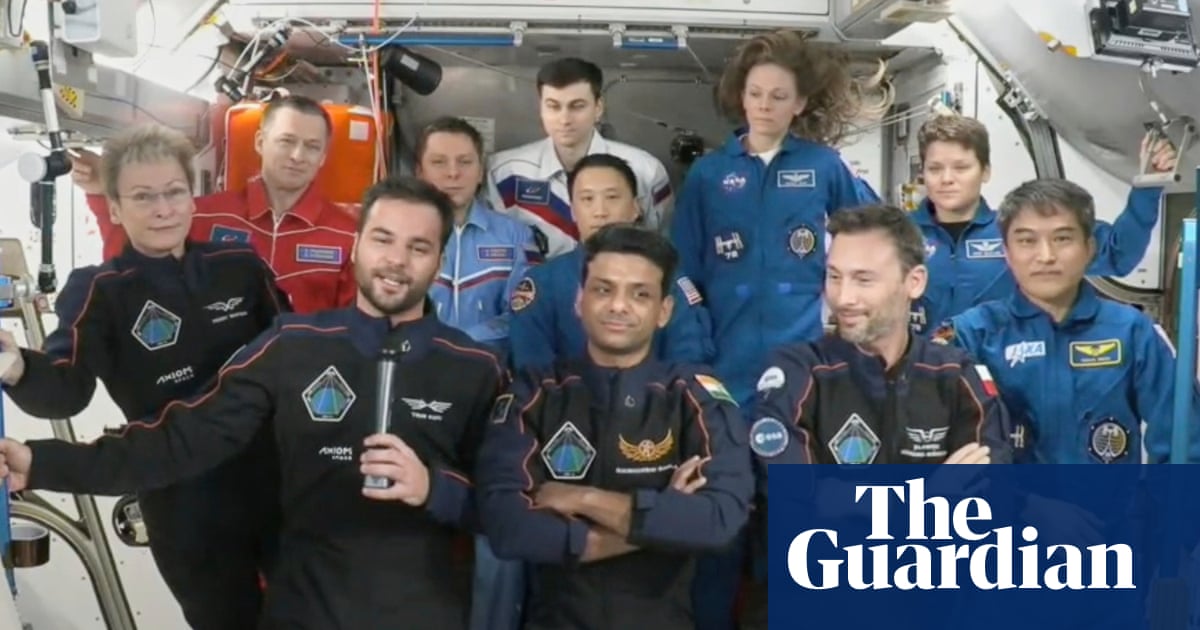A Historic Return to Earth
On a momentous Monday morning, Peggy Whitson, a NASA retiree turned private astronaut, made headlines once again as she and her three crew mates departed the International Space Station (ISS). This journey marks a significant milestone not only in Whitson’s distinguished career but also for the nations represented in her crew: India, Poland, and Hungary. Together, they embarked on their return flight, encapsulated in a Crew Dragon capsule organized by the Texas-based startup Axiom Space in collaboration with Elon Musk’s SpaceX.
Departure from the ISS
The Crew Dragon capsule undocked from the ISS at precisely 7:15 AM ET. This marked the end of another successful visit to the orbiting laboratory, which has become a hub for international collaboration in scientific research and exploration. Just before the capsule separated, the four astronauts, donned in their striking black-and-white flight suits, were seen in live video footage, strapped in and ready for the journey back to Earth. The capsule safely glided away, aided by a couple of quick rocket thrusts, leaving the ISS orbiting approximately 260 miles (418 km) above the eastern coast of India.
The Mission’s Significance
Whitson, at 65, and her crew members – Shubhanshu Shukla, 39, from India; Sławosz Uznański-Wiśniewski, 41, from Poland; and Tibor Kapu, 33, from Hungary – spent a productive 18 days aboard the ISS. Here, they conducted dozens of research experiments in the unique environment of microgravity, showcasing the potential for international scientific collaboration in space. This mission holds special significance not just for the astronauts involved but also for their respective countries. For India, Poland, and Hungary, it represents the first human spaceflight in over 40 years, positioning them firmly back on the global space exploration map.
Axiom Space’s Vision
The Axiom-4 mission signifies the fourth such flight organized by Axiom Space since 2022. As the company pioneers the business of sending astronauts sponsored by private enterprises and government space programs into low-Earth orbit, it is hinting at a future where commercial space travel becomes a norm. Axiom has set its sights on building a commercial space station that could eventually replace the ISS, projected to retire around 2030.
Meet the Crew
At the helm of the Axiom-4 mission is Whitson, who has had an illustrious career with NASA, uniquely shaping the agency’s human spaceflight program. Notably, she was the first woman to serve as chief astronaut at NASA and the first female commander of an ISS expedition. Upon retiring in 2018, she did not slow down; instead, she took on the role of director of human spaceflight for Axiom, where her extensive experience continues to benefit the next generation of astronauts. Whitson’s impressive cumulative space time now stands at 675 days, a US record, and her latest journey extends this by roughly three weeks.
The Capsule: Grace
The Crew Dragon capsule used in this mission, affectionately dubbed “Grace” by its crew, was launched from NASA’s Kennedy Space Center in Cape Canaveral on June 25. This capsule is notable not only for carrying an esteemed astronaut like Whitson but also as the fifth vehicle in SpaceX’s Crew Dragon fleet, highlighting the company’s rapid progression in human spaceflight capabilities.
Looking Forward
As Axiom prepares for the capsule’s re-entry into Earth’s atmosphere, it anticipates a parachute landing in the Pacific Ocean off the California coast, expected around 5:30 AM ET the following day. Such routine yet groundbreaking missions underscore the evolving landscape of space exploration, where commercial partnerships enhance humanity’s reach beyond Earth. With ambitions soaring higher and crewed missions gaining momentum, the future looks compelling for both science and space travel as Axiom Space continues to lead the way.


